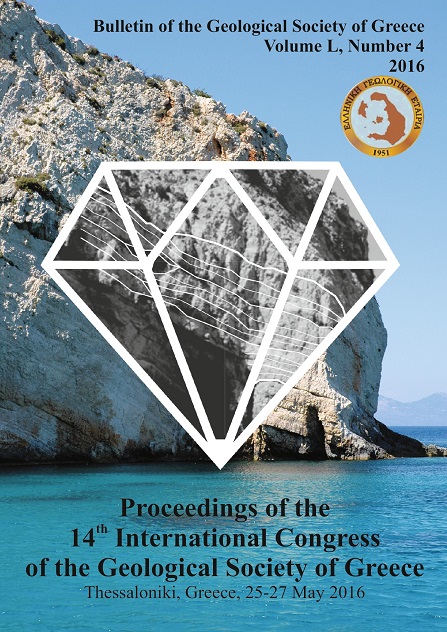ON THE RELATIVELY COMPOSITIONAL HOMOGENEITY OF ALBANIAN EASTERN OPHIOLITIC BELT

Abstract
Ophiolitic formation of Albanides, named as Mirdita zone, represents a compact
segment of oceanic lithosphere of Middle-Upper Jurassic. Based on petrographic,
geochemical and metalogenical features two types of belts are distinguished: western
MORB and eastern SSZ types. In fact, structural and geological units as well as many
other elements have shed light on lack of a sharp separation between the two belts.
Recent investigations have evidenced that different ultramafic massifs of western
ophiolitic formation, represent an evident variation of their composition from
harzburgite to lherzolitic -types. This composition reflects a different grade of partial
melting of upper mantle. Peridotites show a high variability, from 0.3 - 3.8 wt.%
Al2O3, varying from small to highly extreme depleted peridotite.
On the contrary, Albanian eastern belt, it seems to be formed by a more homogeneous
hartzburgitic mantle.
Detailed petrologic and metallogenic investigations have evidenced that this belt
changes also from one massif to another, naturally at a smaller level, therefore it is
easier to be named relatively homogeneous. It is distinguished by a higher melting
degree, chiefly of hartzburgitic-type, characterized by whole and thick ultramafic
section, as well as by metalogenic variety, mostly of metallurgic-type of chromite
mineralization. It is supposed that rock-forming and mineraluzation processes have
been developed not uniformly along the ophiolitic belt.
Article Details
- How to Cite
-
Çina Α. (2016). ON THE RELATIVELY COMPOSITIONAL HOMOGENEITY OF ALBANIAN EASTERN OPHIOLITIC BELT. Bulletin of the Geological Society of Greece, 50(4), 1789–1798. https://doi.org/10.12681/bgsg.14106
- Section
- Petrology and Mineralogy

This work is licensed under a Creative Commons Attribution-NonCommercial 4.0 International License.
Authors who publish with this journal agree to the following terms:
Authors retain copyright and grant the journal right of first publication with the work simultaneously licensed under a Creative Commons Attribution Non-Commercial License that allows others to share the work with an acknowledgement of the work's authorship and initial publication in this journal.
Authors are able to enter into separate, additional contractual arrangements for the non-exclusive distribution of the journal's published version of the work (e.g. post it to an institutional repository or publish it in a book), with an acknowledgement of its initial publication in this journal. Authors are permitted and encouraged to post their work online (preferably in institutional repositories or on their website) prior to and during the submission process, as it can lead to productive exchanges, as well as earlier and greater citation of published work.


